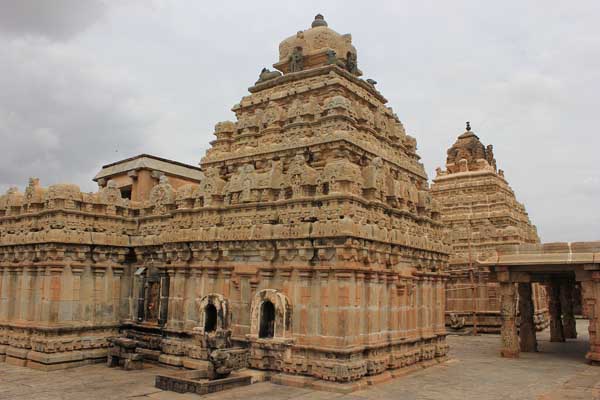The Nolambavadi style of Dravidian architecture refers to a specific architectural style of Hindu temple that emerged during the rule of the Nolamba dynasty in the southern region of India, particularly in present-day Karnataka, during the 9th to 12th centuries CE. The Nolambas were one of the many dynasties that contributed to the rich architectural heritage of South India.
Key features of the Nolambavadi style include:
Dravidian Elements: Like other Dravidian architectural
styles, Nolambavadi architecture is characterized by its emphasis on symmetry,
grandeur, and intricate detailing. It features pyramid-shaped towers (vimanas)
over the sanctum sanctorum of temples, pillared halls, and elaborate
sculptures.
Temple Complexes: Nolambavadi temples typically consist of multiple structures enclosed within a compound wall. These include the main shrine (garbhagriha), a pillared hall (mandapa), a large entrance porch (mahadwara), and sometimes smaller shrines dedicated to various deities.
Elaborate Sculptures: The temples of the Nolambavadi style
are adorned with intricate sculptures depicting gods, goddesses, celestial
beings, mythical creatures, and scenes from Hindu mythology. These sculptures
are often carved in high relief on the walls of the temples, pillars, and
doorways.
Stellate Plan: Some Nolambavadi temples feature a unique
stellate (star-shaped) plan for their sanctum sanctorum. This architectural
feature sets them apart from other Dravidian temple styles.
Decorative Elements: The exteriors of Nolambavadi temples
are embellished with decorative elements such as pilasters, niches, miniature
towers (aedicules), and friezes featuring intricate floral and geometric
motifs.
Materials: Nolambavadi temples were primarily constructed
using locally available materials such as granite and soapstone. These
materials were carved with great precision to create the elaborate
architectural and sculptural elements characteristic of the style.
Bhoganandiswara (Bhoga Nandeeshwara temple complex), the
northern temple of the twin temples at Nandi village in Chikkaballapur, is the
oldest surviving temple in Nolambavadi-style of Dravidian architecture in
Karnataka. Other examples of Nolambavadi-style temples include the Brahmeshvara
Temple in Kikkeri and the Lakshmi Narasimha Temple in Bhadravathi, both located
in Karnataka, India. These temples serve as enduring testaments to the
architectural and artistic prowess of the Nolamba dynasty and continue to be
revered as sacred sites and cultural landmarks.
